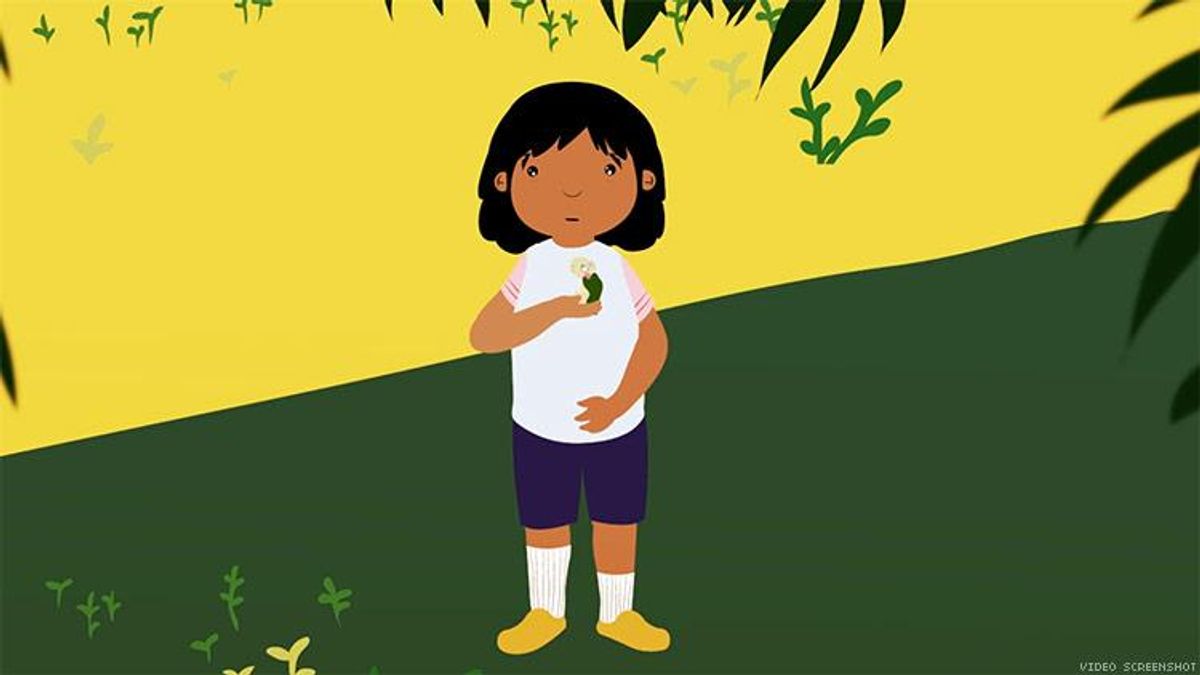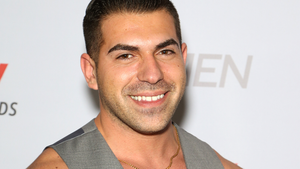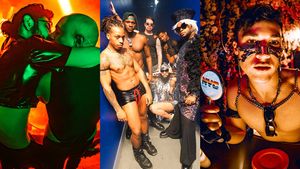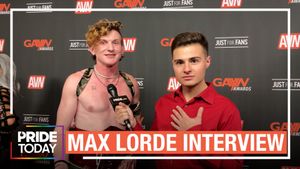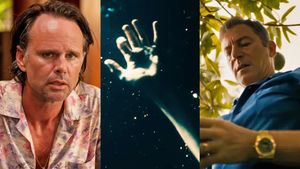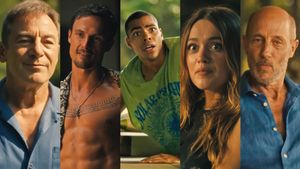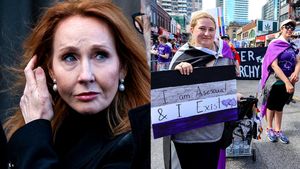Caracol Cruzando tells of the journey of 7-year old Anais "Caracol" Cruzando, who leaves her homeland of Costa Rica to immigrate with her undocumented parents to the U.S. En route, she is separated from her family and her best friend, a tiny pet turtle named Tiku. In just 15 minutes, the short film lands a powerful punch about the pain, trauma, resilience and unlikely beauty within this migration experience.
Writer and director Pamela Chavez shares the heartache, and imagination that went into this touching film.
The Advocate: What drew you to tell this story? Is any of it based on your life?
Chavez: Yes, it's loosely based on some experiences I had immigrating from Costa Rica to the U.S. I was born in the U.S., but my family was not -- they were undocumented. We all lived with the fears of deportation looming over us, a fear many undocumented families feel. My parents decided to move back down to Costa Rica when I was 5, so we caravaned down. Things didn't work out for them, so we moved back up when I was 8. The airport scenes in the U.S. were true to my memories as a child -- it's similar to what I experienced. When I lived in Costa Rica, I was having a hard time adjusting, and my parents got me a dog and she quickly became my best friend. When we left, we had to leave her behind, along with most of our extended family. As an 8-year-old, I was crushed. I was devastated to leave my dog, to move again, leave my grandparents, cousins, aunties, and uncles. It was a rough transition. I wanted to take those memories and do something with them. I wanted to approach the story through that lens. The memories were very vivid, and I felt that I could use them to propel a sort of healing process for me, to help let go of those memories in a way that felt transformative. I wanted to take control of my narrative, I wanted to express something genuine, heartfelt, and relevant. I didn't want to just focus on the feelings of despair, I wanted to rehumanize our experiences and offer a counternarrative to the ways im/migrants are portrayed in the media.
The connection between her family and her pet turtle is really touching. How did you conceptualize the dream sequences that show their bond?
That scene took several iterations to write -- I had some wild alternative sequences! Luckily, I had a talented story editor, Aurora Guerrero, helping me shape the story. We went through several versions, and she gave me honest, helpful feedback. At the end of the day, I wanted to make sure there was a thread between a few important themes- water, nature, and loss. These themes carry throughout the film and serve as a part of Anais's identity. It's where she grounds herself. In the whale scene, we see her courage tested. We see that ground shake, and it won't be the first time. The whale, who she fears, stands between her and Tiku in the sky. Tiku is not afraid and continues to be playful. Anais knows she has to be courageous to meet him in the sky. She confronts this fear, and their final moment of happiness gives us a bit of closure. We don't know she's about to lose Tiku, but because she faced her fear and didn't let doubt linger, she was able to at least have a final moment with him. Loss is like this -- we don't know when it's coming, but living with courage gives us some peace. Their bond is important, and what she does with it when it breaks is equally important for the story.
How does being a queer woman of color influence your directing and the stories you tell?
I learned to be a storyteller by learning from other QWOC filmmakers who create, advocate, and battle in this field. Our narratives are sidelined, so I approach directing and writing with this is in mind. I think about the film from differing perspectives. I make choices about who this might be for or who might disagree with it. The decisions are conscious and thought out -- being a QWOC, you have to be aware of how you are going to be perceived. As a director, you make a choice about those perceptions. Every director has their own voice and consciousness around this. Because I follow in the footsteps of politically aware and active directors, my lens is one that centers justice, injustice, equity, identity and transformation. These are all pillars of the QWOC feminist movement. My voice, creatively, is where I add to this conversation. As an animator, as a visual artist, and as a storyteller that wants to mix both the genuine and the imaginative. I also prioritized a team of artists that were queer, people of color, or from marginalized communities. I did my research. I connected with my network -- I reached out, and those people reached out to others. People believed in the story and signed up. The talent exists; prioritizing these voices was really important to me. I was given an opportunity through Latino Public Broadcasting to create this story, and it was important for me to do the same.
Your bio says you want to "highlight the resilience and beauty that rise from these uniquely important experiences." Why do you want to focus on the beauty that comes from these stressful and potentially traumatic immigrant situations?
I want to focus on beautiful, real, and difficult experiences because they exist! This is my reality, it's what I can tell from a genuine place. It would be odd for me to tell another story. I have experienced trauma and hardship, but there's also the before, and there's the after! The moments themselves have passed -- for some, they repeat or continue longer than others -- what we are left with is the life we live in between. By focusing on the lessons, it may help change future situations. For example, in this film, Anais loses Tiku. Does it affect who she is? We don't know for certain, but we have an idea. We see she comes from an identity that relies on nature, on her connection to the earth, on a dream world that brings her joy, on ancient, ancestral creatures that guide her, and all the worlds that exist in between. Her parents have instilled a sense of love and hope. Her father shares with her the story of her birth, of her strength. These are all elements that will help Anais grow from her loss. She's got some tools! They will help root her, and we see that when she's facing the moon in the hotel. Even after she loses Tiku and worries about her mother, she still hopes. That to me is beautiful. That's powerful. It's the rose that grows from the concrete, to quote Tupac Shakur. It's character and resilience at play. It's something our communities are very familiar with. Do we know what happens? No. But we have an idea.
How do you hope your film will impact viewers in the midst of our border crisis?
The message being sent by the government during this crisis is that immigrants are subhuman. They're using children as political pawns, and people see that it's wrong! These are issues im/migrants have been dealing with for many years; it's not new, but the purposeful separations are newer. The state's rhetoric of clear, blatant criminalizing has people taking to the streets, fighting back. This film is not the answer, but it's my answer. This is my form of activism, and I hope that it serves a rehumanizing purpose. Anais's relationship to nature serves as a part of her identity as a Costa Rican. No matter where she goes she will always have a connection to that part of herself. It's comforting -- her identity serves a purpose beyond aesthetics. It's humanizing, and will hopefully build empathy. I hope that families who are immigrating or who have immigrated, if they watch this, can find some semblance of hope. The journey across borders is hard, and we just want to forget. It's important to remember where we came from, but most importantly the will it took to get here and how we can continue using it to propel us forward.
What happens to Tiku the turtle?
This story is told through the perspective of a child. Just like Anais, we don't know for sure where Tiku goes. Her dad is equally unaware,, and we will never know. If I was them, I would just be happy I didn't get caught; that's a lot of attention, and attention garners even more review from customs. So, as an audience member, what do you do with that that feeling? Does it sink you? Does it frustrate you? Do you tap into parts of yourself that are resilient, after the anger? How do children feel about not knowing? Can this help create empathy? Where does your resilience come from? I had only a short amount of time in the film to build Anais's resilience, but for her it comes from her relationship with nature. That's why it's important for to remember what Ceiba said -- "Never lose yourself, or forget, we [nature] are everywhere."
Caracol Cruzando is part of the PBS online film festival. Watch and vote for your favorite film here.
Learn more about Pamela Chavez here.
